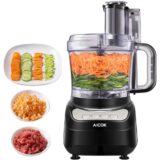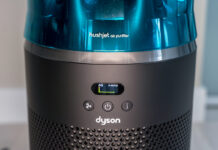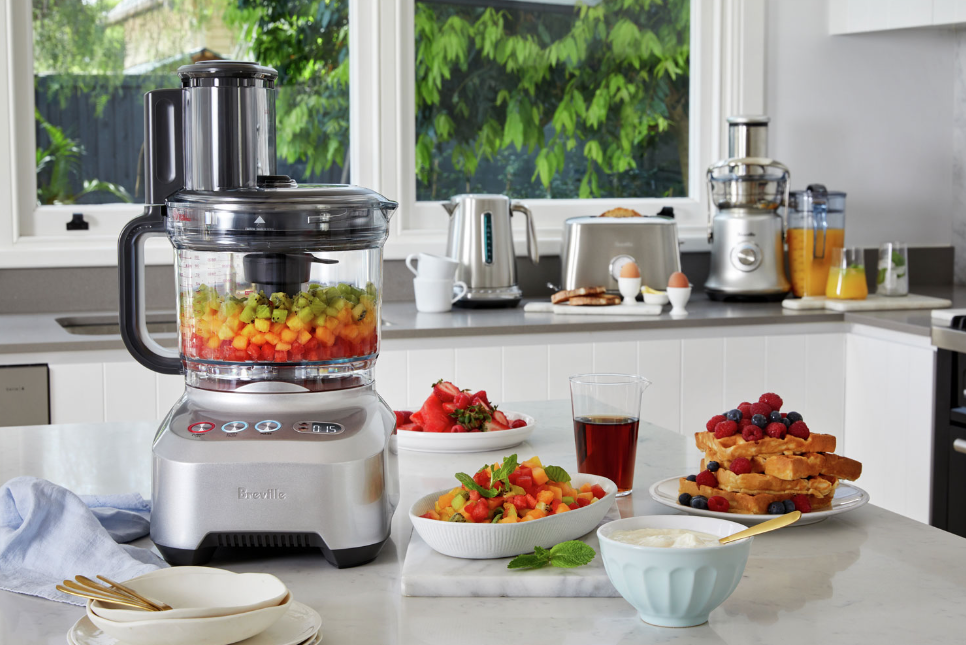
There are a number of small appliances that any serious, or even enthusiast home cook should have in their kitchen. One such appliance is a food processor, which can simplify the prep process not to mention significantly reduce the amount of time and manual work you need to put into even elaborate recipes. Here, we’ll discuss what a food processor is, the types you can buy, and why they are one of the most versatile and useful small kitchen appliances you can own.
Food Processor Buying Guide Quick Reference Handout
Table of Contents
- What is a food processor?
- How is a food processor different from a blender?
- Breaking down the functions of a food processor (and why you’d use them)
- What are the benefits of a food processor?
- The types of food processors that are available
- What to look for in a food processor?
What is a food processor?
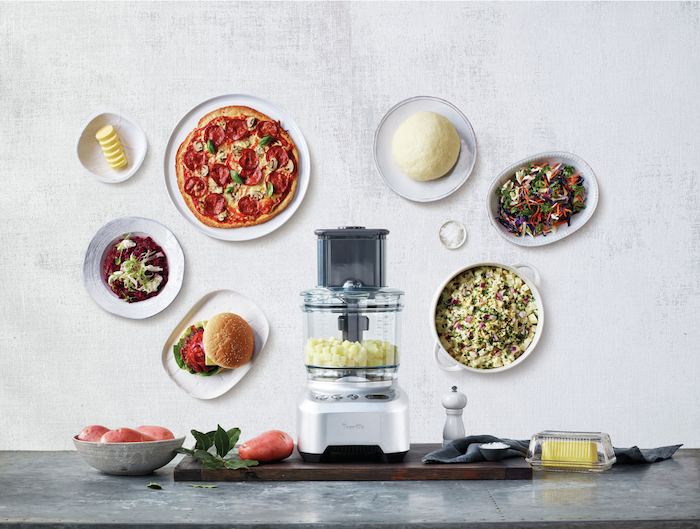
A food processor is a small kitchen appliance that can perform a myriad of functions, including chopping, grinding, mincing, pureeing, mixing/blending, shredding, grating, slicing, and kneading. (We get into deeper detail about each of these in a later section.)
They typically include two angled S-shaped blades, also known as Sabatier blades, that face opposite directions to accomplish the task at hand. A motor is housed in the base while a jar or large bowl sits on the top. Insert the S blades and add pre-cut ingredients using the small feed tube. This can include everything from hard fruits and vegetables to nuts, liquid or even ingredients for the dough. You can also insert special discs for specific tasks, like grating and shredding. Then, simply let it do its thing.
Food processors come in various sizes, ranging from four to 20-cup capacities. Most are large enough to accommodate 7-10 cups of ingredients. Motor power starts at about 400 watts up to as high as 750 watts to tackle the most serious jobs.
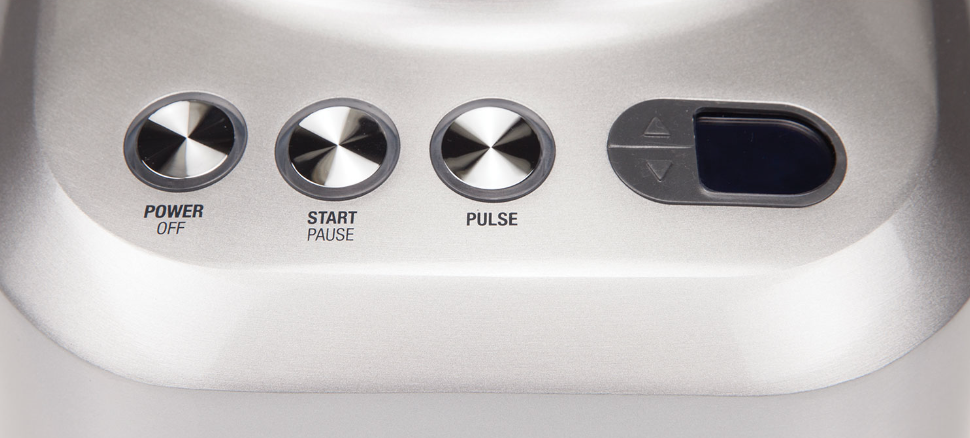
They have buttons like low/high mix and pulse to tackle different types of food processing jobs. Included are various attachment blades and discs. Some of the premium models even include storage containers to house all the attachments neatly on the counter, cupboard, or in drawer.
Note that food processors are slightly different from food choppers, which have become popular of late thanks to viral TikTok videos. Food choppers typically contain a single blade that chops, purees, and mixes smaller batches of food. Some even come with a whisk attachment. Food processors are usually (though not always) larger and more powerful with a feed tube and multiple blades. But these two small kitchen appliances do perform some of the same functions. The same goes for a food processor and a blender.
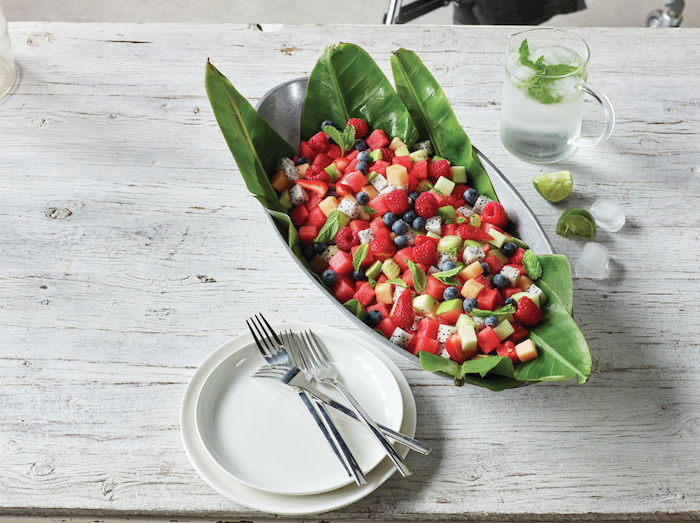
How is a food processor different from a blender?
While a blender has a fixed blade, a food processor has multiple blades and discs that each perform different functions. This makes it more versatile than a blender.
A blender is meant for tackling blending jobs using a tall jar that the blended dish can be poured from (though you can also do things like mash potatoes to a smooth consistency). Conversely, a food processor has a wide work bowl that can accommodate and process a large amount of ingredients.
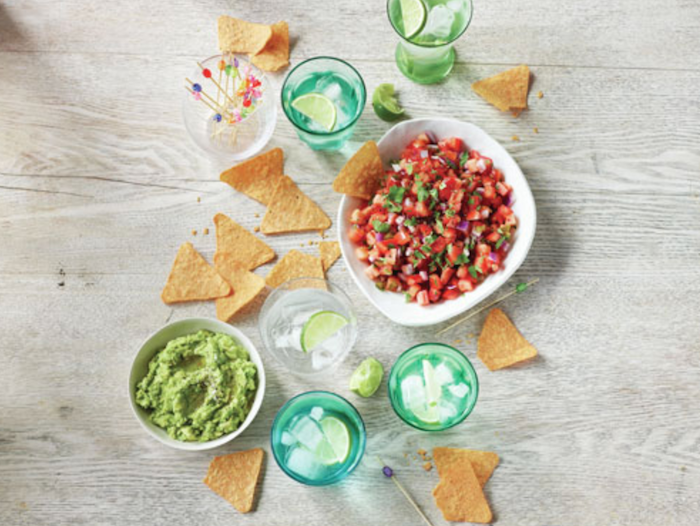
You’ll get dishes with chunkier results with a food processor (think salsas and dips). A blender is better when you want a smooth consistency (think smoothie) and performs better with ingredients like ice. You can use thick, dry mixtures with a food processor while a blender requires liquid. With that said, both appliances can be used to make things like dips, salsa, emulsified dressings, and condiments.
In short, a blender is best (mostly) for drinks and dips that are to be liquified, crushed, or pureed and poured while a food processor is better for food that will be eaten with a spoon.
Breaking down the functions of a food processor (and why you’d use them)
As noted above, a food processor can tackle many different jobs based on the blade, ingredients, and function used.
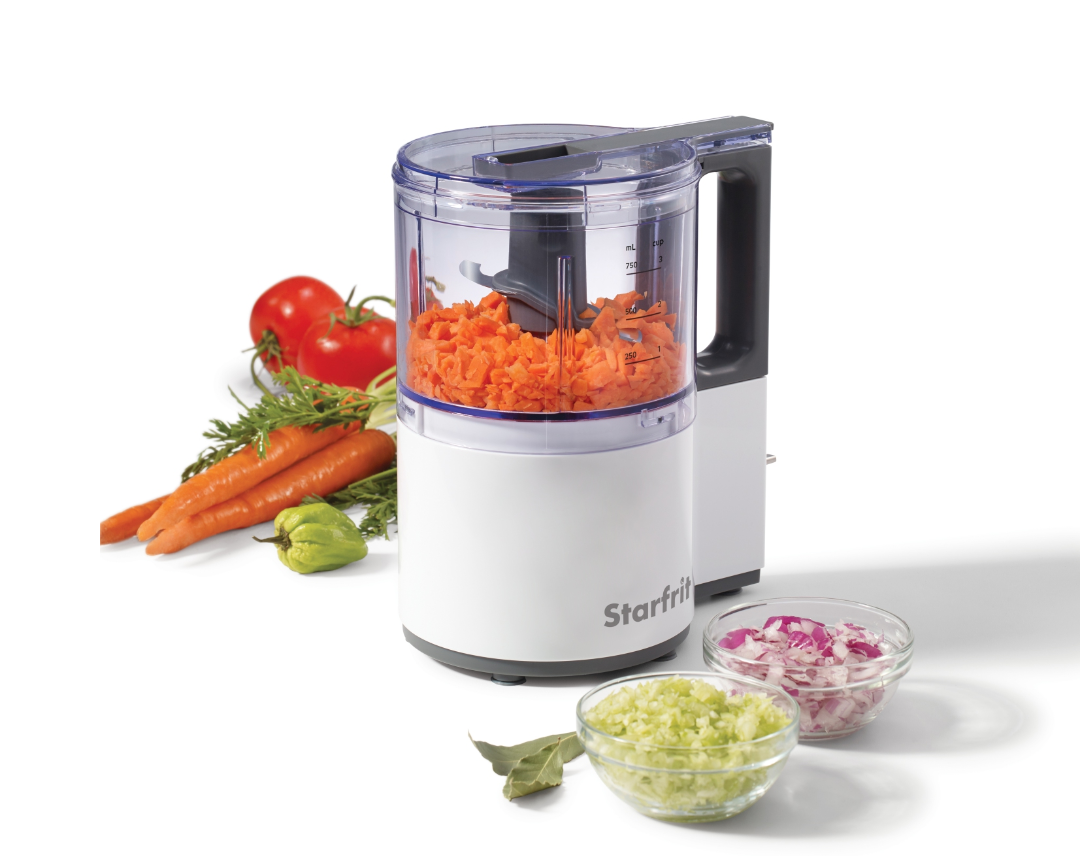
1. Chopping – Whether you’re making soup, salad, stew, sauce, or hummus, chopping garlic and onions for a delicious homemade salsa, or nuts for cookies or to top baked fish, a food processor can handle this task.
2. Grinding/mincing – Add meat like sausages (without the casings) or beef to grind for hamburgers or meatballs to pair with an indulgent pasta dish. Pop in cauliflower for healthy cauliflower rice, stale bread for crumbs to make homemade holiday stuffing, or even make your own homemade flour.
3. Pureeing – By running a food processor for up to a minute with cooked fruits or vegetables, you can make homemade purees to mix into smoothies, dessert recipes, or even as homemade baby food. You can also use this function to make things like homemade nut butter or even mayonnaise without additives. This function is also useful for emulsifying salad dressing.
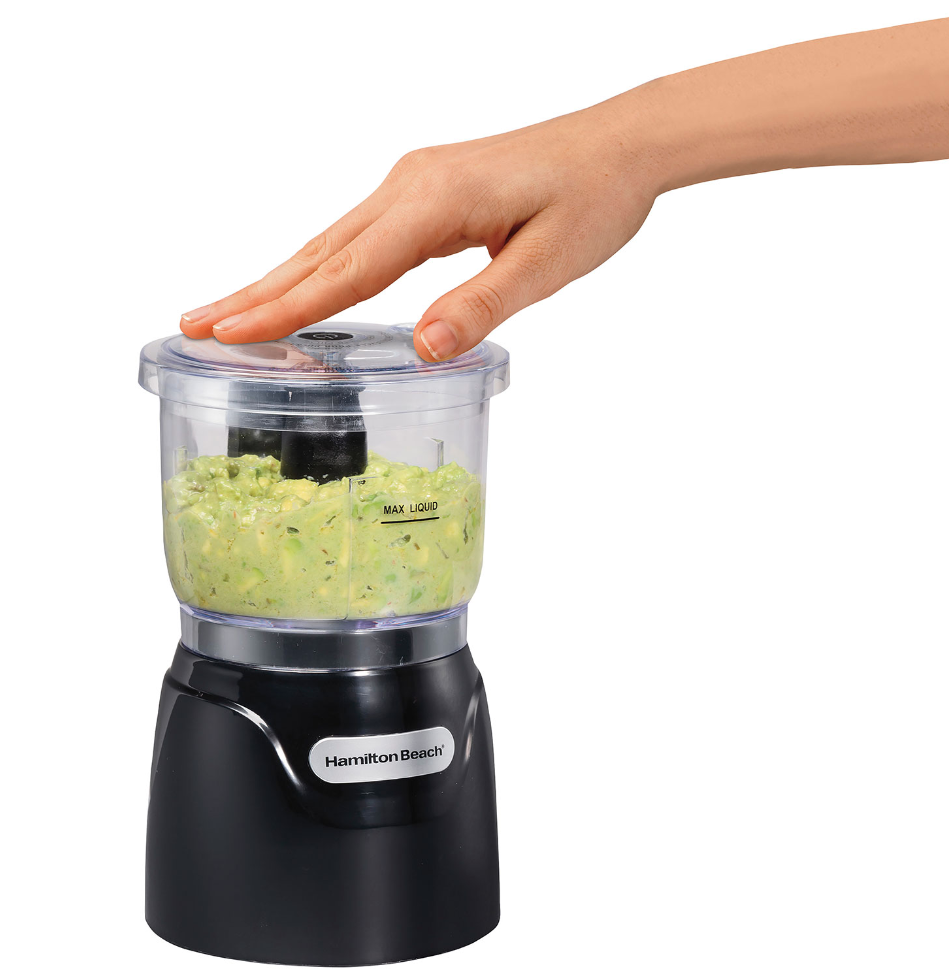
4. Mixing/blending – This is the function that’s most comparable to a dedicated blender. As noted, if you want to make smoothies, a blender is the better option since it handles ice more easily and effectively. But for things like salad dressing and dips, a food processor can handle the job.
5. Shredding/grating – Typically accomplished using separate attachments that either come with the machine or can be purchased separately, a food processor can shred things like hard vegetables, potatoes, and cheese. Add the feed tube, chop the ingredients so the chunks fit through it, and then run it through the shredding disc. Make shredded mozzarella for homemade pizza, shredded parmesan for pasta, potatoes for latkes or hash browns, and carrots for a carrot cake or muffins. Get creative with how you use this as well. For example, you could funnel broccoli stalks through for salads and slaws instead of throwing them out and wasting the delicious vitamins they contain.
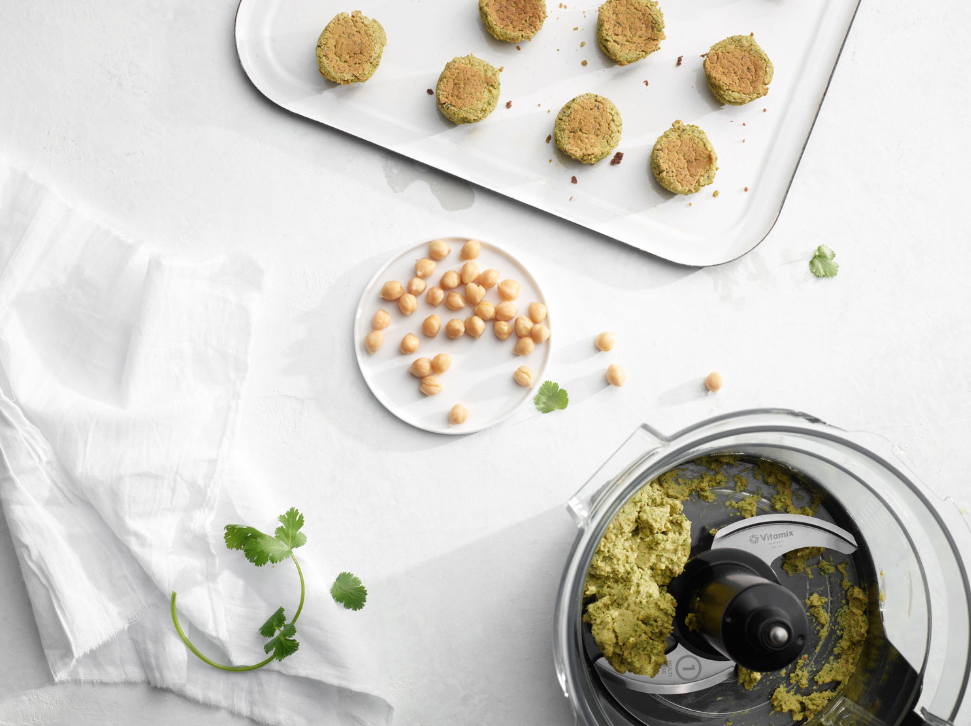
6. Slicing – Perfect for presentable salads, scalloped potatoes, homemade potato chips, deli meat, and charcuterie plates, the slicing feature can create thin, uniform slices. Choose the thickness and use everything from salami to pepperoni, Brussels sprouts to cucumbers, and beets to potatoes to create dishes that look like they came out of a restaurant.
7. Kneading dough – One of the lesser-known features of food processors is their ability to knead the dough. Some food processors come with a dough blade for kneading dough for homemade bread, pizza crust, and pasta. This attachment can also be used to cut butter into recipes for making things like croissants, scones, and other butter-based pastries that require a flaky texture.
What are the benefits of a food processor?
There are numerous benefits to having a food processor in the kitchen.
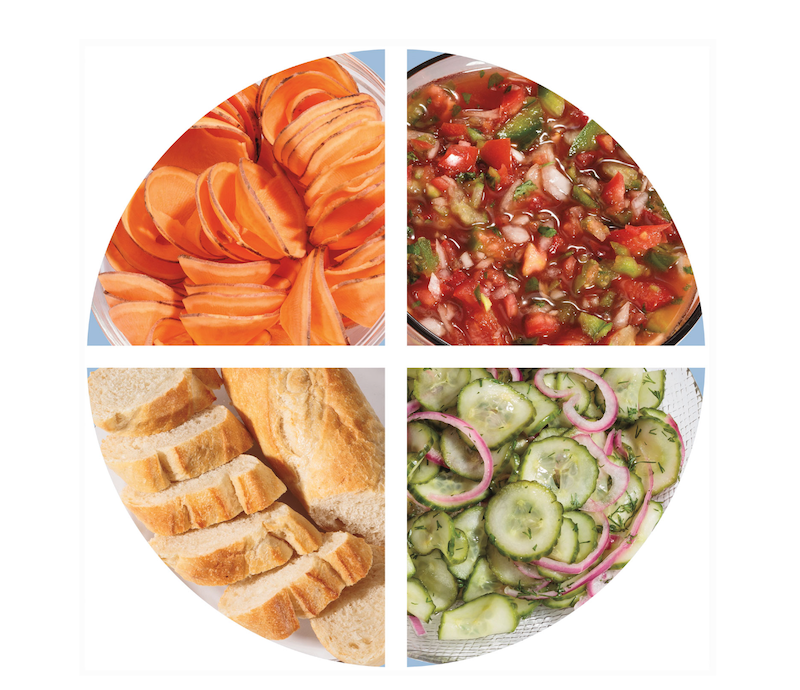
1. Saves time – Being able to chop, slice, dice, grate, and more in the kitchen is a huge time-saver. Oftentimes, the prep work for a recipe is what takes the longest. Being able to use a small appliance to do the heavy lifting, so to speak, can be a game-changer.
2. Encourages healthier eating – Hand-in-hand with the time saving is the fact that having a machine to handle these otherwise time-consuming tasks can convince you to eat healthier. Instead of opting for a microwave dinner because it will take too long to prep all the veggies for your own stir fry, use a food processor and have the meal ready in under 15 minutes.
3. Retain flavour and consistency – Sometimes, it’s tempting to buy things pre-chopped, like nuts. But chopping fresh nuts yourself will retain the flavour and moisture, which can improve the taste of your cooking and baking. The same goes with cheese: pre-grated cheese is tempting but it comes with a waxy substance that can impact the taste of your meals. Plus, it doesn’t melt as nicely as freshly grated cheese.
4. Get chunkier results – While you can make dips and sauces in a blender, you will end up with a smooth consistency (though some blenders have a pulse function that can leave a few chunks). A food processor will yield a nice, chunky result for things like salsa or dip. You don’t need to cut the chunks first and add them after: the food processor can create the chunks for you.
5. Break down solid foods – With a food processor, you can use little to no liquid and still be able to break down solid food. This will be beneficial for everything from crumbled toppings for cupcakes to fillings for a cake, crust for poultry, meat, fish, and more.
The types of food processors that are available
Food processors come in a variety of sizes to suit different sized kitchens, families, and needs. You can get one that fits as little as 3 cups of ingredients up to as much as 16 cups and everything in between along with ones with motors from 350 watts up to 1,200 watts for tackling more intense jobs. They are available from a number of top brands like KitchenAid, Hamilton Beach, Starfrit, and Breville.
Available in a variety of colours from basic black and silver to more vibrant red, pastel-like blues, and others, it’s easy to find one to match your kitchen decor.
Each also comes with a different selection of attachments to tackle different jobs. Most important is to choose the right one based on not only its power and size but what it comes with.
What to look for in a food processor
Before choosing a food processor, you’ll want to look at a few things to make sure it will meet your specific needs.
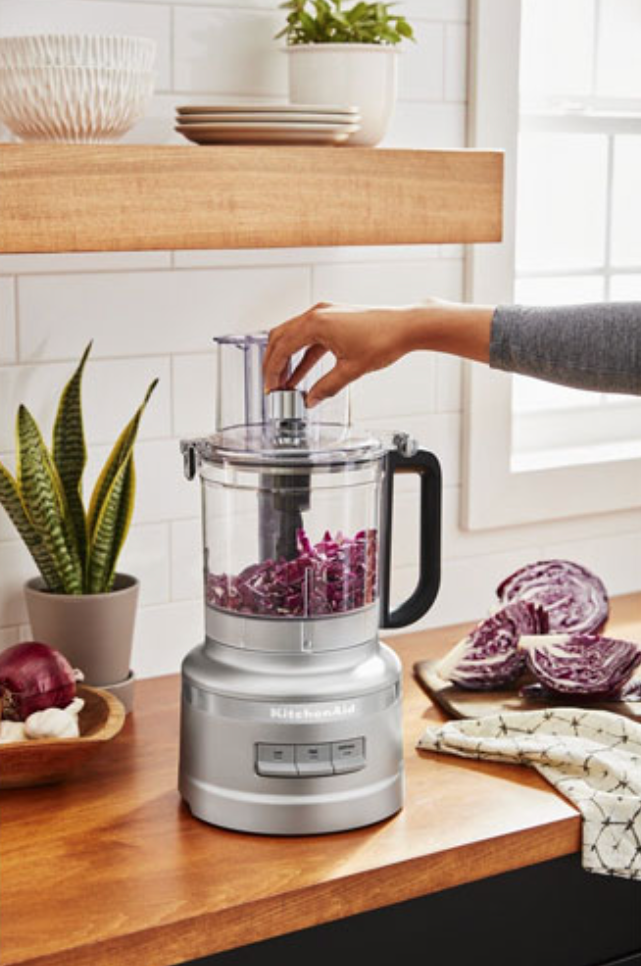
1. Size – The overall size should be enough to handle whatever jobs you want. If you think you’ll only want to do small things like chop vegetables or nuts for a single serving or enough for 2-3 people, a compact model will suffice. If you have a larger family, look for something bigger. This might also be useful if you entertain so you don’t have to do things in batches because the machine is too small. You can always go middle of the pack with an 8-12-cup model so it’s never too small or too large.
2. Power – Depending on the types of things you want to do in a food processor, you’ll want a motor that can keep up. As with anything, the higher the wattage, the more powerful. Typically, you’ll find that larger machines sport higher power motors. Nonetheless, keep this in mind if you plan on putting the machine through its paces. Motor overload protection is useful as a safety feature.
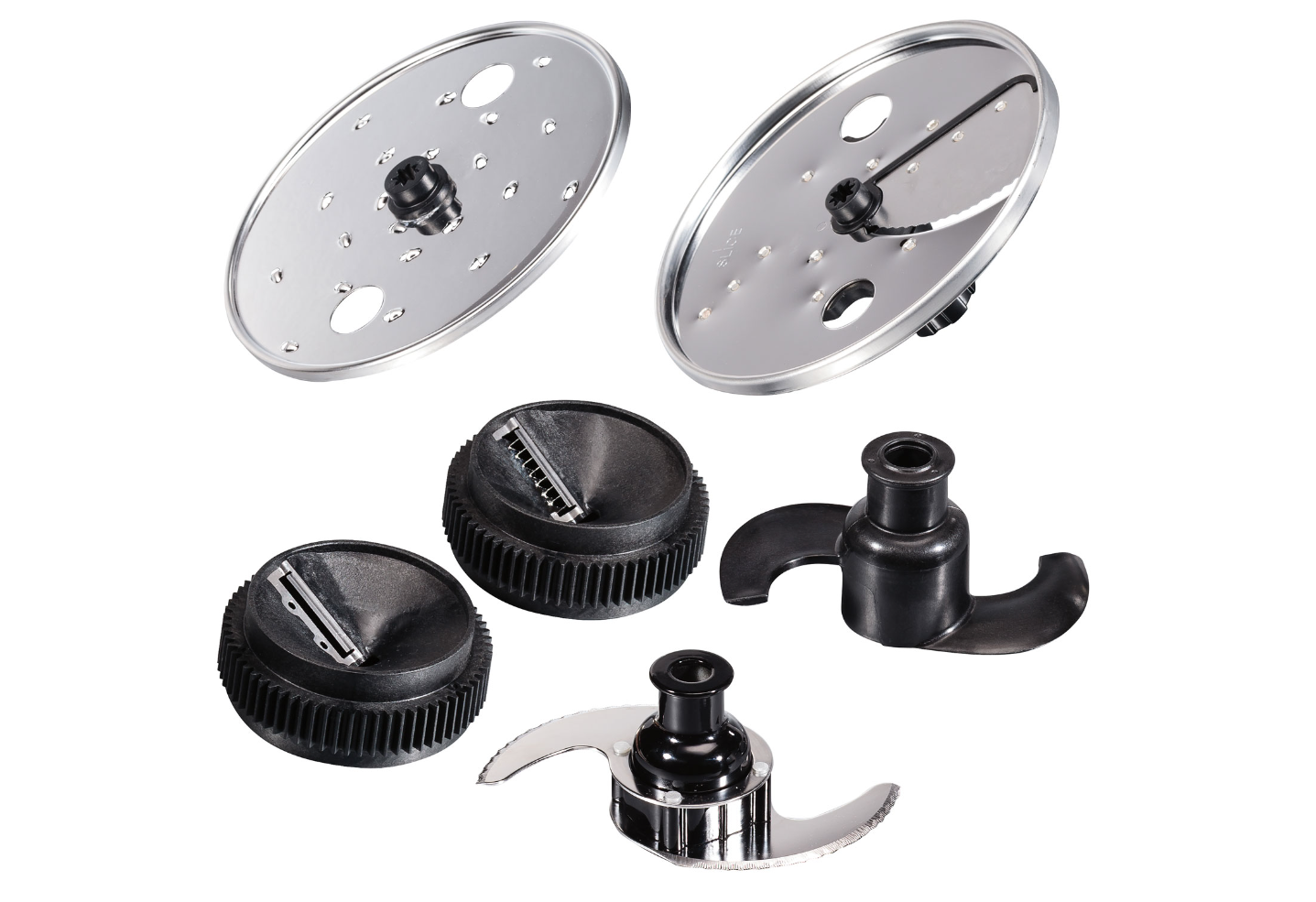
3. Settings and attachments – Most machines have a low, high, and pulse setting. Arguably more important, however, are what attachments it comes with and what it’s capable of doing. You don’t want to get a food processor to spiralize vegetables, for example, grate cheese, or knead the dough, only to realize it doesn’t come with the necessary attachment. Some food processors have as many as 24 settings and come with six or more attachments while others might only have a few settings (high, low, and pulse, as noted) and come with one or two. With a powerful motor, two settings, and many attachments, however, this might be all you need.
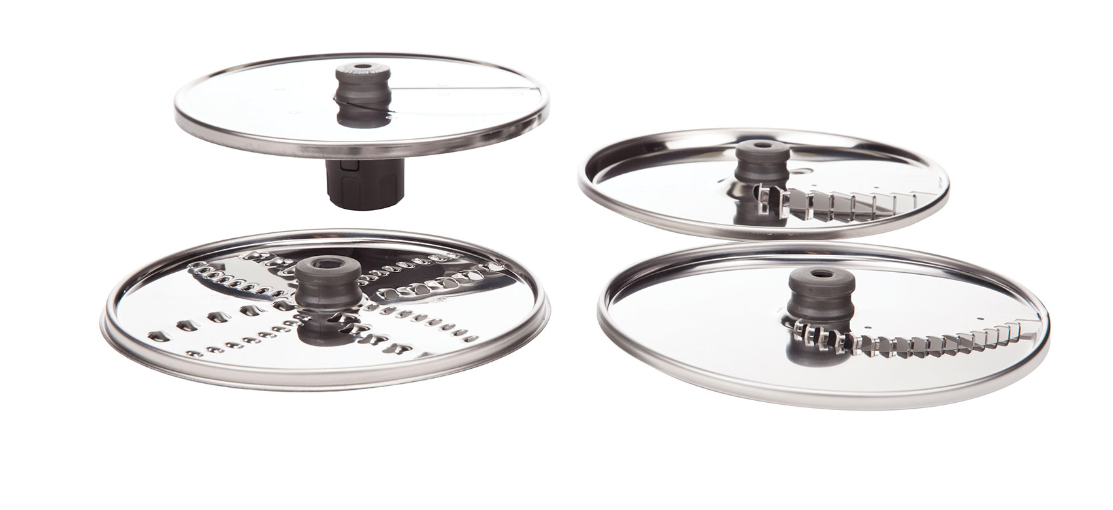
4. Different discs – Further to this, many food processors come with different discs for slicing and dicing. Look for a variable one if you want to be able to cut things at varying thicknesses, whether it’s thicker apples for a salad or ultra-thin potatoes for a scalloped dish. Other common options include julienne (protruding, short and sharp teeth to cut items into thin matchsticks) and French fry (similar to julienne but resulting in wider pieces).
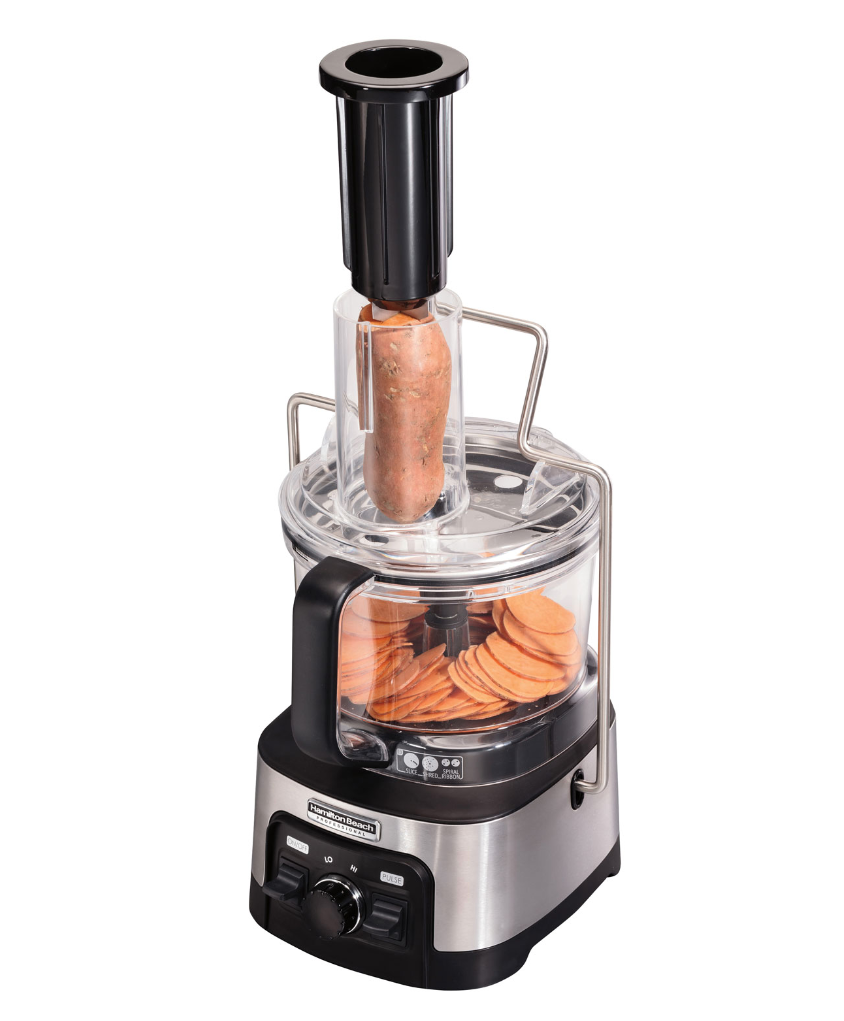
5. Chute size – The size of the tube for inserting food is important. If you want to do as little prep as possible and be able to roughly chop vegetables like carrots and cauliflower, you’ll want a machine with a wider chute. Some are fairly narrow which requires more manual chopping before adding to the processor while others have chutes as wide as 5.5 inches. Larger ones allow for minimal prep and faster completion since you can add more at a time, including rough cuts.
6. Bowl and handle features – A bowl with a handle and pour spout is handy for pouring once done. A useful inclusion is a drizzle basin or small hole at the top for adding ingredients while the machine is running, like oil to a pesto sauce until you get the desired consistency. Some also have measurement markings on the side, which can be helpful so you can both measure and mix in one bowl, reducing the number of dirty dishes to clean in the end. Most food processor bowls and lids are clear so you can see what’s going on inside, a valuable part of the process. Finally, dishwasher-safe components make clean-up a breeze.
Other features – An emulsifying function for dispersing fat into the water, like mayonnaise or oil into a vinegar-based dressing, will be appreciated by some. Other features to consider include non-slip suction feet; a spiralizing attachment for fancier presentations and delicious stir fries; and a whisk for beating egg whites and making whipped cream. You can also find cordless models, which provide the freedom to move around the kitchen.
Take the next step
Are you ready to jump on the food processor bandwagon and marvel at how much time it saves you in the kitchen? Check out a wide variety of food processors at Best Buy Online.



